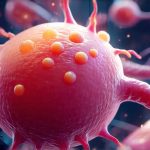Our understanding of appetite regulation is undergoing a revolution. For decades, we’ve viewed hunger as a relatively simple process – stomach emptiness triggering signals to the brain. However, emerging research reveals a far more complex interplay between our bodies and the trillions of microorganisms residing in our gut, collectively known as the gut microbiota. These bacteria aren’t merely passive bystanders; they actively participate in modulating our hormonal responses related to hunger, satiety, and overall metabolic health. This connection is bidirectional – what we eat influences the gut microbiome, and the gut microbiome subsequently impacts how we perceive and respond to hunger cues.
This intricate relationship challenges traditional dietary approaches focused solely on calorie restriction or macronutrient ratios. It suggests that optimizing gut health might be a powerful strategy for managing weight, improving metabolic function, and achieving lasting changes in eating behavior. The focus is shifting towards nourishing the beneficial bacteria within us, recognizing them as key players in our body’s natural appetite control mechanisms. This isn’t about eliminating cravings entirely; it’s about fostering a gut environment that promotes balanced signaling and reduces impulsive or emotionally driven eating.
The Gut-Brain Axis & Ghrelin: A Two-Way Street
The communication pathway between the gut and the brain, known as the gut-brain axis, is crucial for understanding this connection. It involves neural, hormonal, and immunological signals constantly traveling in both directions. Ghrelin, often dubbed the “hunger hormone,” plays a central role. Produced primarily by cells in the stomach, ghrelin stimulates appetite, promotes food intake, and influences energy balance. Its levels typically rise before meals and fall after eating. However, this seemingly straightforward process is significantly impacted by the composition and activity of our gut microbiome.
Recent studies have demonstrated that specific bacterial species can directly influence ghrelin production and sensitivity. For instance, certain strains may promote the release of ghrelin, potentially increasing appetite, while others might dampen its effects or alter how receptors respond to it. The microbiome achieves this through various mechanisms, including the production of short-chain fatty acids (SCFAs) – metabolites created when gut bacteria ferment dietary fiber. SCFAs like butyrate, propionate, and acetate have been shown to influence hormone secretion, gut motility, and even brain function, impacting appetite regulation.
Furthermore, the gut microbiome can affect the integrity of the gut barrier. A compromised gut barrier, often referred to as “leaky gut,” allows bacterial components to enter the bloodstream, triggering inflammation that disrupts hormonal signaling, including ghrelin’s action. This creates a vicious cycle where dysbiosis (an imbalance in gut bacteria) leads to increased inflammation, altered hormone levels, and further disruption of the microbiome itself. Maintaining a healthy gut barrier is therefore essential for optimal appetite control. Understanding the connection between liver health can also play an important role in overall wellbeing.
How Gut Bacteria Influence Ghrelin Levels
The impact of specific bacterial groups on ghrelin isn’t fully understood, but research is revealing fascinating insights. Some studies suggest that individuals with a more diverse gut microbiome tend to have lower ghrelin levels and improved metabolic health compared to those with less diversity. This highlights the importance of dietary strategies aimed at promoting microbial richness.
- Bifidobacteria and Lactobacilli, often found in fermented foods like yogurt and kefir, are associated with reduced ghrelin expression and enhanced satiety signals. These bacteria contribute to SCFAs production, which can modulate appetite.
- Conversely, an overgrowth of certain potentially harmful bacteria may increase ghrelin production or impair its regulation. For example, some species linked to inflammation have been shown to exacerbate ghrelin signaling, leading to increased hunger.
- The type of diet plays a crucial role. Diets high in processed foods, sugar, and saturated fats can disrupt the gut microbiome, promoting dysbiosis and potentially elevating ghrelin levels. Conversely, diets rich in fiber, fruits, vegetables, and fermented foods support a balanced microbiome and healthier hormonal regulation. Recognizing acid reflux symptoms can also help understand the body’s signals.
It’s important to note that these effects are often strain-specific. Not all Lactobacilli or Bifidobacteria have the same impact on ghrelin; different strains possess unique metabolic capabilities and interact differently with the host’s physiology. This emphasizes the need for personalized approaches based on individual microbiome profiles, rather than one-size-fits-all recommendations. In cases of chronic inflammation, understanding gut biofilm can be beneficial.
The Role of Short-Chain Fatty Acids (SCFAs) in Appetite Regulation
SCFAs are more than just byproducts of bacterial fermentation; they’re powerful signaling molecules that profoundly influence our physiology. They’re absorbed into the bloodstream and can directly impact hormone release, immune function, and even brain activity. In relation to appetite control, SCFAs have several key effects:
- Increased Satiety: Butyrate, in particular, has been shown to promote the release of peptide YY (PYY) and glucagon-like peptide-1 (GLP-1) – hormones that suppress appetite and increase feelings of fullness.
- Improved Insulin Sensitivity: SCFAs can enhance insulin sensitivity, which helps regulate blood sugar levels and reduces cravings for sugary foods. Stable blood sugar is crucial for maintaining consistent energy and preventing impulsive eating.
- Gut Barrier Integrity: As mentioned earlier, butyrate strengthens the gut barrier, reducing inflammation and improving hormonal signaling. A healthy gut barrier prevents bacterial components from triggering unwanted immune responses that can disrupt appetite control. Understanding liver and hormones is essential for overall health.
Generating more SCFAs requires sufficient fiber intake. Dietary fiber serves as the primary fuel source for beneficial gut bacteria, allowing them to produce these valuable metabolites. Aiming for 25-35 grams of fiber per day is a good starting point, but individual needs may vary depending on factors like age, activity level, and overall health.
Fiber Intake & Microbiome Diversity: A Symbiotic Relationship
The relationship between dietary fiber and microbiome diversity is deeply interconnected. Fiber isn’t digestible by humans; instead, it reaches the colon where it’s fermented by gut bacteria. Different types of fiber feed different bacterial species, promoting a more diverse and resilient microbiome. This diversity is vital for optimal health because:
- Resilience: A diverse microbiome is better equipped to withstand disruptions caused by antibiotics, stress, or dietary changes.
- Functional Redundancy: Different bacteria possess unique metabolic capabilities; a diverse microbiome ensures that essential functions are maintained even if some species are lost.
- Enhanced SCFA Production: Greater diversity leads to a wider range of SCFAs produced, offering broader health benefits.
To maximize fiber intake and support microbiome diversity:
- Incorporate a variety of plant-based foods into your diet, including fruits, vegetables, whole grains, legumes, nuts, and seeds.
- Focus on prebiotic fibers – non-digestible carbohydrates that specifically nourish beneficial gut bacteria. Examples include inulin (found in onions, garlic, and leeks) and resistant starch (found in cooked and cooled potatoes and rice).
- Gradually increase fiber intake to avoid digestive discomfort like bloating or gas. Drinking plenty of water also helps facilitate digestion. A connection between pancreas and liver is important to remember when thinking about overall health.
Ultimately, understanding the connection between gut bacteria and hunger hormones like ghrelin is shifting our perspective on appetite regulation. It’s no longer solely about willpower or restrictive dieting; it’s about cultivating a healthy gut environment that supports natural hormonal balance and promotes mindful eating habits. This approach emphasizes long-term health and well-being, rather than quick fixes or unsustainable restrictions. It’s also important to consider the impact of overtraining on gut health.


















